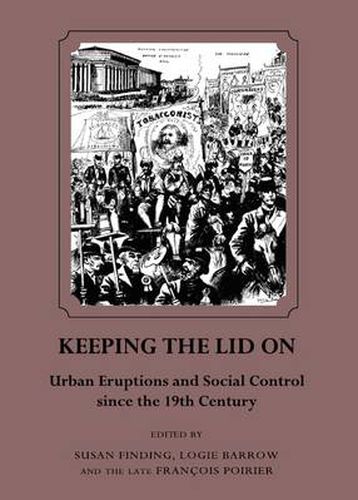Readings Newsletter
Become a Readings Member to make your shopping experience even easier.
Sign in or sign up for free!
You’re not far away from qualifying for FREE standard shipping within Australia
You’ve qualified for FREE standard shipping within Australia
The cart is loading…






The contributors to this book have explored various aspects of urban imagination, so intimately related to a peculiar social environment. They are historians and geographers, linguists and cultural students. Their methodologies are very different, their sources poles apart. And yet, they address the same object of study, social and spatial segregation and urban eruptions, though severally defined: from epidemics to anarchist scares, urban uprisings to mental maps, or the reverberations of urban memories in song, novels and museums. Case studies consider the towns of Liverpool, London, Hull, New York, Salvador de Bahia, or more generally France and America. The networks created among intellectuals and labourers, anarchists and migrants, or the lack of communication between those who feel oppressed (rioters, strikers, anti-vaccination protesters) and those in control, are a further common denominator.In a way, urban epidemics were the epitome of the repulsive character large cities possessed in the eyes even of their own inhabitants. If they were the receptacle of so many foreigners, and shady political characters, if they were the scenes of social and ethnic conflict, and violence, and promiscuity, and prostitution, and drunkenness, and pauperism, they were of necessity a festering sore which nothing could eradicate.It is strange that something of this fear should linger on today-otherwise, how can one explain the lacunae in the official memory of museums?-despite the cultural efforts produced in the opposite direction, with Ackroyd’s love for East-End London, with the revival of a Little Italy in every major American city, with the nostalgic folklorisation of past miseries in Salvador de Bahia and in popular song. What sense of belonging can be generated by an obliteration of the past, what dynamic local culture can spring from an absence, from a hole in collective memory? This book goes some way to filling those gaps.
$9.00 standard shipping within Australia
FREE standard shipping within Australia for orders over $100.00
Express & International shipping calculated at checkout
The contributors to this book have explored various aspects of urban imagination, so intimately related to a peculiar social environment. They are historians and geographers, linguists and cultural students. Their methodologies are very different, their sources poles apart. And yet, they address the same object of study, social and spatial segregation and urban eruptions, though severally defined: from epidemics to anarchist scares, urban uprisings to mental maps, or the reverberations of urban memories in song, novels and museums. Case studies consider the towns of Liverpool, London, Hull, New York, Salvador de Bahia, or more generally France and America. The networks created among intellectuals and labourers, anarchists and migrants, or the lack of communication between those who feel oppressed (rioters, strikers, anti-vaccination protesters) and those in control, are a further common denominator.In a way, urban epidemics were the epitome of the repulsive character large cities possessed in the eyes even of their own inhabitants. If they were the receptacle of so many foreigners, and shady political characters, if they were the scenes of social and ethnic conflict, and violence, and promiscuity, and prostitution, and drunkenness, and pauperism, they were of necessity a festering sore which nothing could eradicate.It is strange that something of this fear should linger on today-otherwise, how can one explain the lacunae in the official memory of museums?-despite the cultural efforts produced in the opposite direction, with Ackroyd’s love for East-End London, with the revival of a Little Italy in every major American city, with the nostalgic folklorisation of past miseries in Salvador de Bahia and in popular song. What sense of belonging can be generated by an obliteration of the past, what dynamic local culture can spring from an absence, from a hole in collective memory? This book goes some way to filling those gaps.